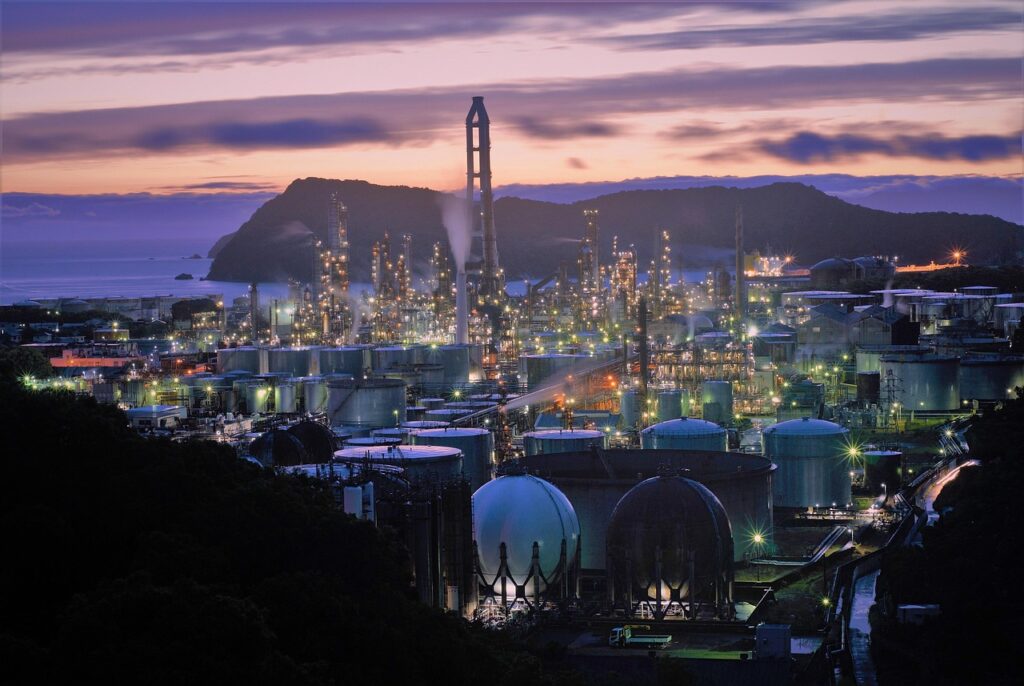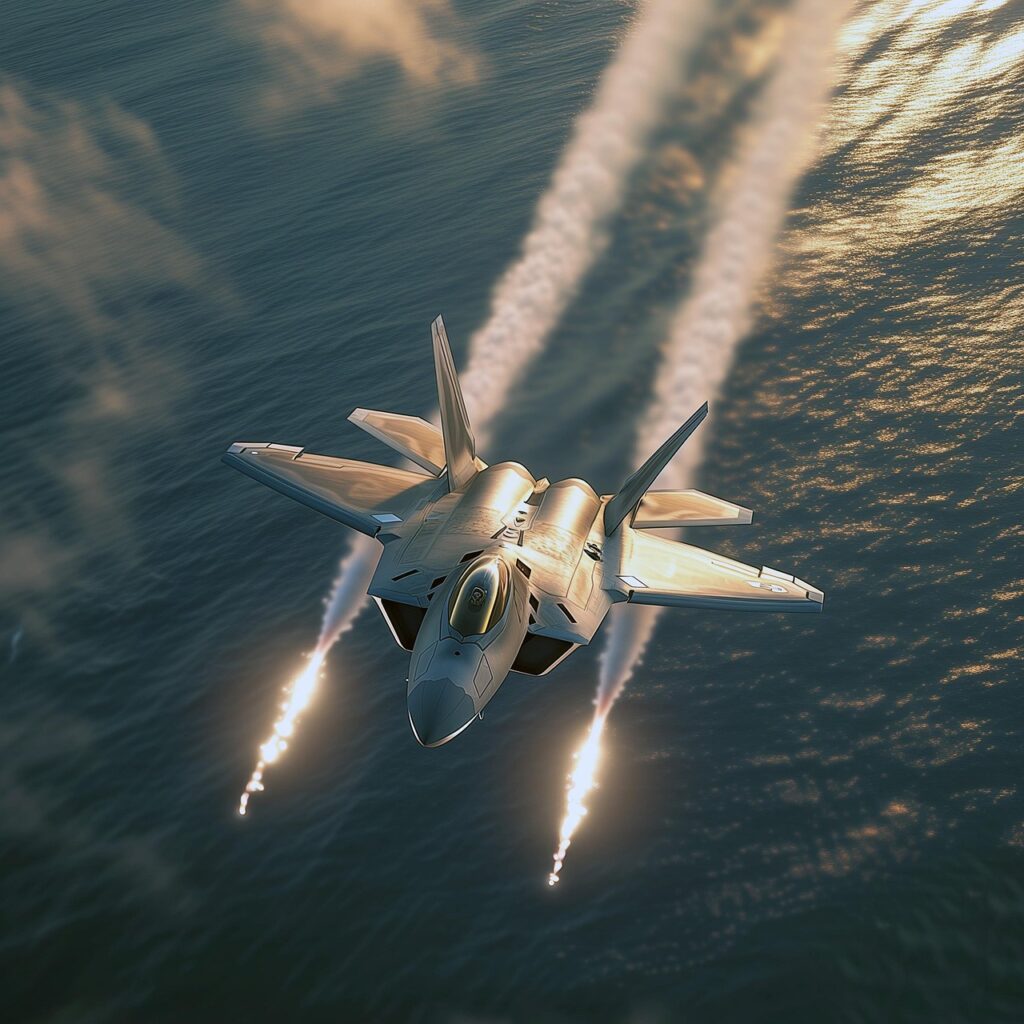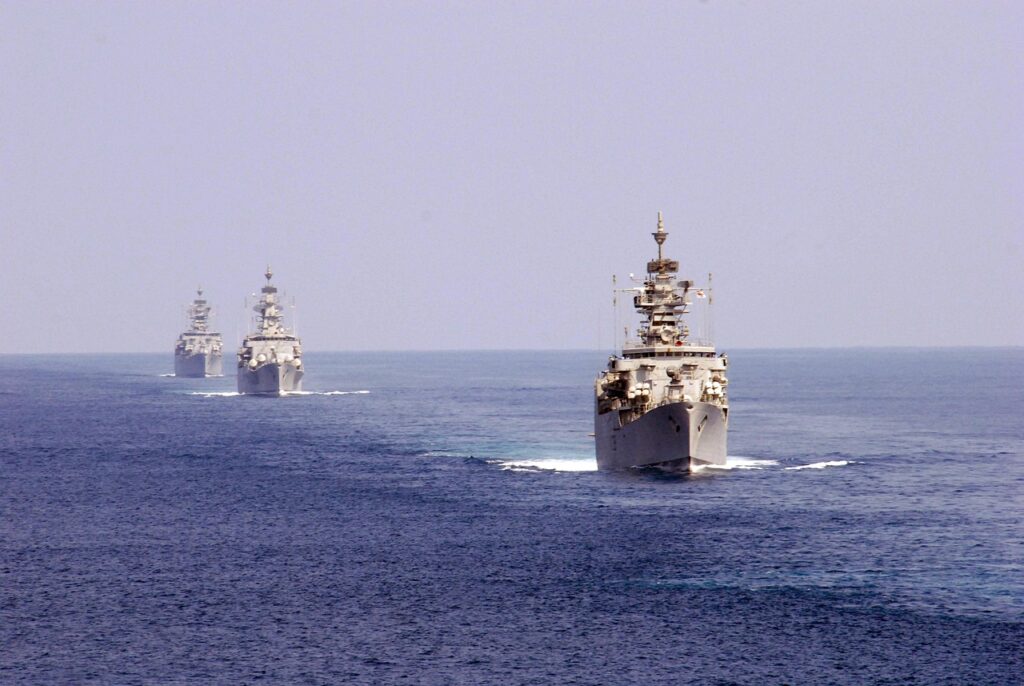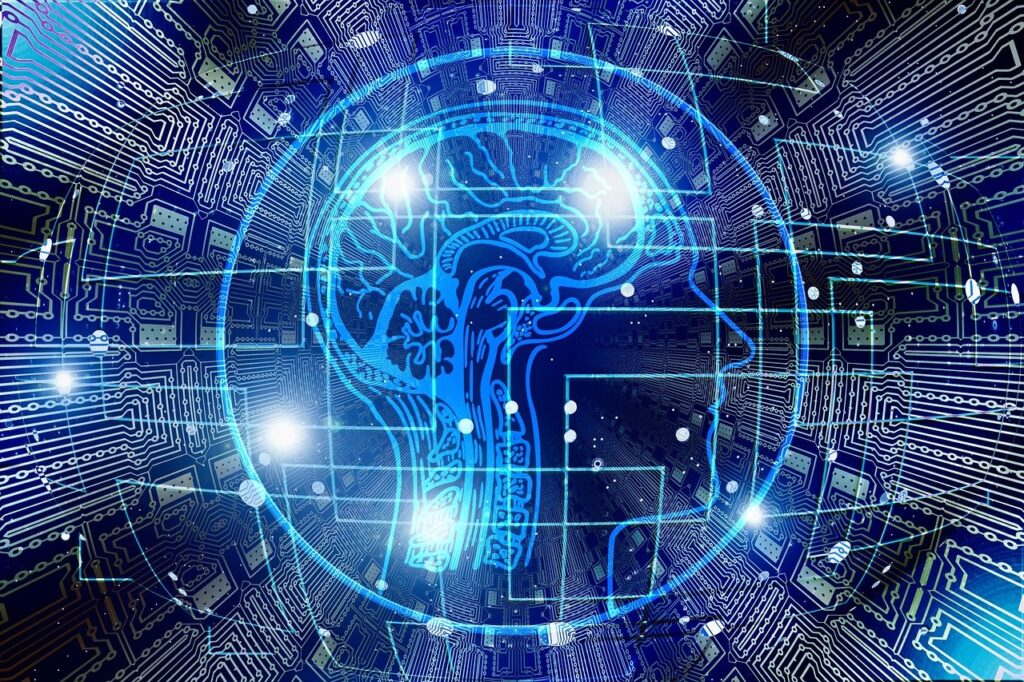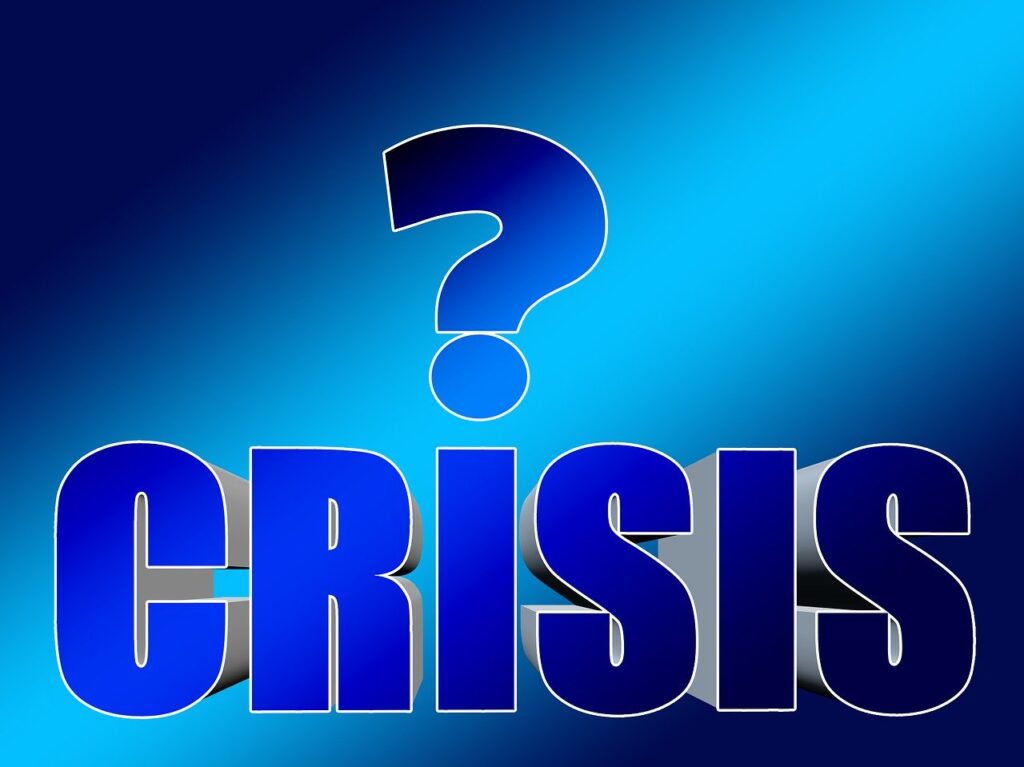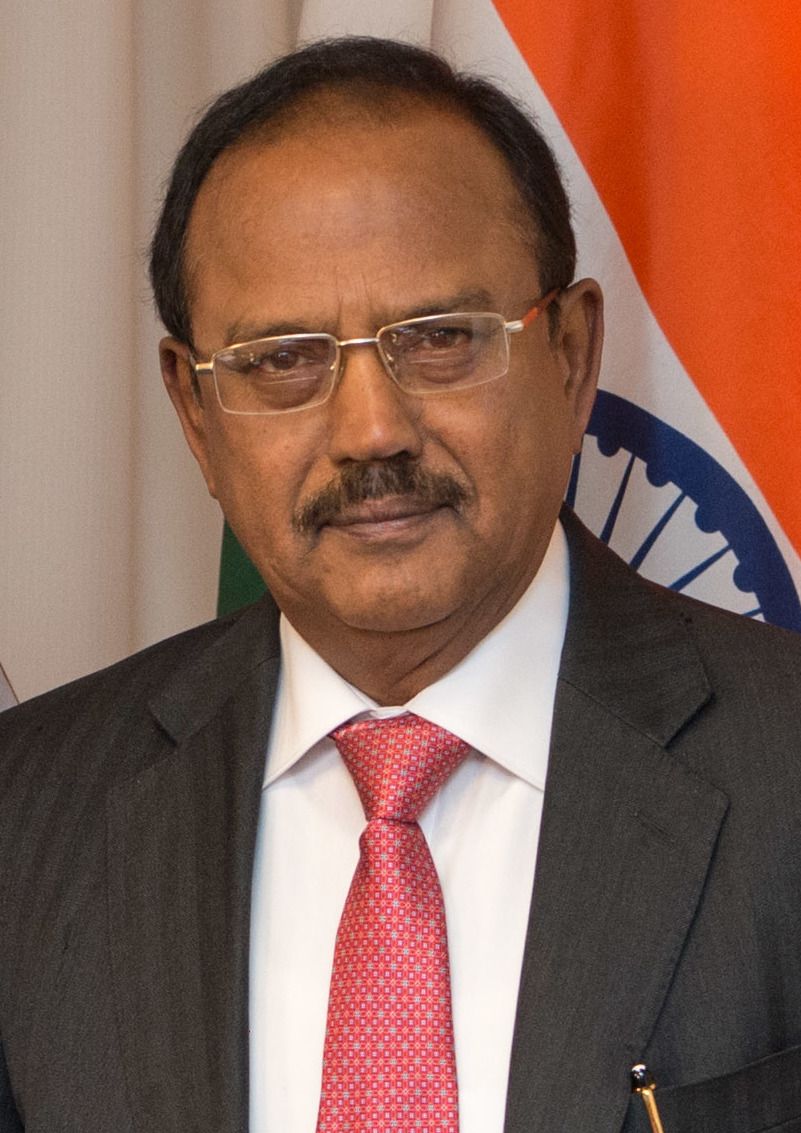
The military parade through central Beijing on September 3, 2025, served as a potent declaration, signaling China’s formidable military advancements and its leader Xi Jinping’s vision for a redefined global order. This meticulously choreographed spectacle, commemorating the 80th anniversary of China’s victory over Japan in World War II, was not merely a retrospective event; it was a forward-looking pronouncement of a nation ready to assert its power on the international stage. With over 50,000 spectators gathered at Tiananmen Square, the display unveiled an array of cutting-edge hardware, underscoring China’s rapid modernization efforts and its intent to challenge established global hierarchies.
The event, which saw President Xi Jinping alongside Russian President Vladimir Putin and North Korean leader Kim Jong Un, offered a rare glimpse into emerging geopolitical alignments. This unprecedented gathering, a “sheer political theatre” as described by Laura Bicker, China correspondent for the BBC, preceded the impressive roll-out of advanced weaponry. The parade highlighted a strategic intent to project Beijing’s power, not only as the world’s second-largest economy but also as a counterweight to the United States amidst ongoing shifts in the global economic and political landscape.
In examining the specific military capabilities showcased, this article delves into the technological innovations that defined the parade. From formidable intercontinental ballistic missiles to sophisticated drone systems and novel directed energy weapons, China’s display revealed a military increasingly equipped for 21st-century warfare. These advancements are not isolated developments but components of a comprehensive strategy aimed at enhancing the People’s Liberation Army’s (PLA) operational effectiveness and solidifying China’s position as a dominant force in Asia and beyond.

1. **DF-61 Intercontinental Ballistic Missile (ICBM)**The parade offered a first public viewing of the DF-61 intercontinental ballistic missile, a colossal weapon designed to project China’s strategic deterrence capabilities globally. Carried on an eight-axle truck, this missile represents the PLA Rocket Force’s inaugural new ICBM since the DF-41 was introduced in 2019, signifying a notable progression in China’s nuclear arsenal. Its presence underscored Beijing’s commitment to modernizing its strategic forces and ensuring its ability to launch nuclear weapons from land, a crucial component of its nuclear triad.
The development and deployment of such a formidable ICBM enhance China’s overall strategic stability, indicating a robust and continually advancing nuclear deterrent. This land-based capability, combined with potential sea and air launch options, strengthens China’s ability to respond to perceived threats, fundamentally altering the calculus for any potential adversary. The sheer scale of the DF-61 also communicates a clear message about China’s industrial and technological capacity to develop and field advanced weapon systems independently.
The unveiling of the DF-61 solidifies China’s position among the world’s leading nuclear powers. While its nuclear arsenal “still lags far behind those of Russia and the US,” the rapid increase in its size and “innovative ways of delivering its warheads” point to an accelerating trajectory. The ICBM’s public display serves as a powerful symbol of this growing capability, reinforcing the notion that China is investing heavily in maintaining a credible strategic deterrent for the coming decades.
Military equipment: Dongfeng (missile)
Categories: All articles lacking reliable references, All articles with dead external links, Articles containing simplified Chinese-language text, Articles lacking reliable references from June 2025, Articles with dead external links from September 2017
Summary: The Dongfeng (Chinese: 东风; lit. ‘East Wind’) series, typically abbreviated as “DF missiles”, are a family of short, medium, intermediate-range and intercontinental ballistic missiles operated by the Chinese People’s Liberation Army Rocket Force (formerly the Second Artillery Corps).
Get more information about: Dongfeng (missile)
Read more about: Beyond the Spectacle: What China’s Military Parade Reveals for Asia and a Reordering World

2. **Hypersonic Missiles and Glide Vehicles**A particularly alarming display for defense experts was the array of missiles featuring hypersonic glide vehicles (HGVs), including new anti-ship models like the YJ-15, YJ-17, YJ-19, and YJ-20. These weapons represent a significant leap in offensive capability, capable of carrying warheads at speeds greater than five times the speed of sound. Their distinctive irregular flight trajectories pose immense challenges for existing missile defense systems, making them “nearly impossible to intercept.” Dr. Sidharth Kaushal highlights these as examples where “China leads the world.”
The strategic implications of such advanced hypersonic weaponry are profound. By combining extreme speed with maneuverability, these missiles bypass traditional ballistic missile defense systems, which are typically designed to track and intercept targets with predictable flight paths. This capability provides China with a potent first-strike or retaliatory option that could overwhelm an adversary’s defenses, fundamentally altering the balance of power in regional and global conflicts.
Furthermore, the introduction of anti-ship hypersonic missiles, designed to inflict “serious damage to large vessels,” presents a credible threat to aircraft carriers and other major surface combatants. Such weapons could significantly complicate naval operations for rival powers in critical maritime regions. This display signals a clear intent by Beijing to invest in asymmetric advantages, aligning with “intelligent warfare” and prompting a re-evaluation of missile defense strategies worldwide.
Military equipment: Hypersonic glide vehicle
Categories: All articles containing potentially dated statements, Articles containing potentially dated statements from 2022, Articles with short description, Ballistic missiles, CS1 French-language sources (fr)
Summary: A hypersonic glide vehicle (HGV) is a type of warhead for ballistic missiles that can maneuver and glide at hypersonic speed. It is used in conjunction with ballistic missiles to significantly change their trajectories after launch. Conventional ballistic missiles follow a predictable ballistic trajectory and are vulnerable to interception by the latest anti-ballistic missile (ABM) systems. The in-flight maneuverability of HGVs makes them unpredictable, allowing them to effectively evade air defenses. As of 2022, hypersonic glide vehicles are the subject of an arms race.
Get more information about: Hypersonic glide vehicle
Read more about: China’s Parade of Power: A New Chapter in the World’s Greatest Military Rivalry, Signifying a Shifting Global Order
3. **Directed Energy Weapons (Laser Air Defense Systems)**Among the most forward-looking technologies showcased were China’s directed energy weapons, specifically mobile truck- and ship-mounted laser air defense systems, including the OW5-A50 laser weapon. The PLA displayed two versions: a massive one for naval air defense and a smaller, truck-mounted variant for ground troop protection. These systems move beyond conventional kinetic weapons, relying on electromagnetic energy to disable targets through heat, disruption of electrical systems, or blinding of sensors.
Directed energy weapons offer compelling advantages over traditional projectile-based armaments. They are “more economical than kinetic weapons,” with “a shot from a laser costing just a fraction of a bullet or missile.” Additionally, “logistics are easier too as heavy metal projectiles don’t need to travel with the weapon, just its energy source.” These factors allow for a higher volume of engagement at a lower cost, a critical consideration in modern warfare scenarios that might involve swarms of drones or missiles.
The potential deployment of these laser systems “in numbers in the People’s Liberation Army forces (PLA)” “could present real problems for any adversary’s ability to blunt Chinese military movements.” This defensive capability is particularly relevant for counter-drone strategies, providing a substantial edge. The strategic introduction of directed energy weapons underscores China’s ambition to dominate cutting-edge military technologies, signaling a shift towards “intelligent warfare” and challenging existing air superiority paradigms.
Military equipment: Directed-energy weapon
Categories: All Wikipedia articles written in American English, All articles with dead external links, All articles with unsourced statements, Articles with dead external links from February 2024, Articles with dead external links from June 2012
Summary: A directed-energy weapon (DEW) is a ranged weapon that damages its target with highly focused energy without a solid projectile, including lasers, microwaves, particle beams, and sound beams. Potential applications of this technology include weapons that target personnel, missiles, vehicles, and optical devices.
In the United States, the Pentagon, DARPA, the Air Force Research Laboratory, United States Army Armament Research Development and Engineering Center, and the Naval Research Laboratory are researching directed-energy weapons to counter ballistic missiles, hypersonic cruise missiles, and hypersonic glide vehicles. These systems of missile defense are expected to come online no sooner than the mid to late 2020s.
China, France, Germany, the United Kingdom, Russia, India, Israel are also developing military-grade directed-energy weapons, while Iran and Turkey claim to have them in active service. The first use of directed-energy weapons in combat between military forces was claimed to have occurred in Libya in August 2019 by Turkey, which claimed to use the ALKA directed-energy weapon. After decades of research and development, most directed-energy weapons are still at the experimental stage and it remains to be seen if or when they will be deployed as practical, high-performance military weapons.
Get more information about: Directed-energy weapon

4. **Advanced Drone Technologies (Air, Ground, and Underwater)**The parade featured an “impressive array of drones,” demonstrating China’s extensive investment across all operational domains: air, ground, and sea. This included “extra-large unmanned submarines” like the AJX002 and HSU100, aircraft designed to fly as ” loyal wingmen” to stealth fighters, and ground drones armed with machine guns, or configured for mine-clearing and logistics. The “weaponized ‘robot wolf'” specifically highlighted China’s commitment to cutting-edge robotic warfare, marking a glimpse into the future of military automation.
These unmanned systems are not merely prototypes; Malcolm Davis, senior analyst in defense strategy at the Australian Strategic Policy Institute (ASPI), noted that “the unmanned systems that the Chinese are displaying today are quite significantly advanced. They seem to be more advanced in some respects than what we’re seeing in the West, and they’re in operational service.” The AJX002, a “giant, 60-foot (18m), underwater nuclear-capable drone,” and the HSU100, “specifically designed to lay mines,” reveal formidable undersea capabilities.
The “loyal wingmen” concept in aerial combat signifies a qualitative leap in airpower, where AI-powered drones can augment manned fighter jets, performing reconnaissance, missile carriage, or even sacrificial roles. On the ground, armed “robotic dog” drones, along with those for mine-clearing and logistics, represent a future where autonomous systems reduce human risk and enhance operational efficiency in hazardous environments.
China’s extensive display of drones indicates a clear strategy to leverage autonomous capabilities for both offensive and defensive roles, aligning with the concept of “intelligent warfare.” The sheer volume and sophistication of these systems suggest a rapid acceleration in their deployment, potentially allowing China to overcome traditional numerical or qualitative disadvantages. This emphasis on unmanned systems, from air to sea, positions China to “challenge global powers and shape future warfare” through innovative, networked capabilities.
Military equipment: DARPA
AgencyName: Defense Advanced Research Projects Agency
Logo: DARPA Logo 2010.png
Formed: [object Object]
Coordinates: 38.8788|-77.1088|type:landmark_region:US-VA,title
Preceding1: Advanced Research Projects Agency
Jurisdiction: Federal government of the United States
Headquarters: Ballston, Virginia
Employees: 220
Budget: $4.122 billion (FY2024)
Website: www.darpa.mil
ParentDepartment: United States Department of Defense
Chief1Name: Stephen Winchell
Chief1Position: Director
Categories: 1958 establishments in Virginia, All Wikipedia articles in need of updating, All Wikipedia articles written in American English, All articles with dead external links, All articles with unsourced statements
Summary: The Defense Advanced Research Projects Agency (DARPA) is a research and development agency of the United States Department of Defense responsible for the development of emerging technologies for use by the military. Originally known as the Advanced Research Projects Agency (ARPA), the agency was created on February 7, 1958, by President Dwight D. Eisenhower in response to the Soviet launching of Sputnik 1 in 1957. By collaborating with academia, industry, and government partners, DARPA formulates and executes research and development projects to expand the frontiers of technology and science, often beyond immediate U.S. military requirements. The name of the organization first changed from its founding name, ARPA, to DARPA, in March 1972, changing back to ARPA in February 1993, then reverted to DARPA in March 1996.
The Economist has called DARPA “the agency that shaped the modern world”, with technologies like “Moderna’s COVID-19 vaccine … weather satellites, GPS, drones, stealth technology, voice interfaces, the personal computer and the internet on the list of innovations for which DARPA can claim at least partial credit”. Its track record of success has inspired governments around the world to launch similar research and development agencies.
DARPA is independent of other military research and development and reports directly to senior Department of Defense management. DARPA comprises approximately 220 government employees in six technical offices, including nearly 100 program managers, who together oversee about 250 research and development programs.
Stephen Winchell is the current director.
Get more information about: DARPA
5. **New Military Divisions and Specializations**Beyond the hardware, the parade revealed a significant restructuring within the People’s Liberation Army, with the debut of specialized new military divisions reflecting a modern approach to warfare. These included the Aerospace Force for space operations, the Cyberspace Force for cybersecurity, and the Information Support Force for high-tech warfare. This reorganization underscores China’s recognition of emerging domains as critical battlefields, signaling a strategic shift towards comprehensive, multi-domain capabilities essential for 21st-century conflicts.
The establishment of the Aerospace Force demonstrates China’s intent to dominate the space domain, recognizing its critical role in intelligence, surveillance, reconnaissance, and communication. The Cyberspace Force highlights the PLA’s focus on information warfare and defense against digital threats, crucial in an era where critical infrastructure is vulnerable. Concurrently, the Information Support Force emphasizes high-tech warfare, integrating information across all military branches for decisive advantage.
The formation of these new divisions signifies a holistic transformation of the PLA, moving it beyond traditional land, sea, and air forces towards an integrated, information-centric fighting machine. This modernization effort is not just about acquiring new weapons but about fundamentally rethinking military doctrine and organizational structure to effectively prosecute “intelligent warfare.” It sends a powerful message that China is systematically building capabilities across all spectrums of modern conflict.
Military equipment: Division (military)
Class: “floatright” style=”border:1px solid black; background:white;float: right;text-align: center” cellpadding=”3″
Categories: All articles needing additional references, All articles with unsourced statements, Articles containing Chinese-language text, Articles containing German-language text, Articles containing Russian-language text
Summary: A division is a large military unit or formation, usually consisting of between 10,000 and 25,000 soldiers. In most armies, a division is composed of several regiments or brigades; in turn, several divisions typically make up a corps.
Historically, the division has been the default combined arms unit capable of independent operations. Smaller combined arms units, such as the American regimental combat team (RCT) during World War II, were used when conditions favored them. In recent times, modern Western militaries have begun adopting the smaller brigade combat team (similar to the RCT) as the default combined arms unit, with the division to which they belong being less important.
A similar word, divizion/divizijun/dywizjon, is also used in Slavic languages (such as Russian, Serbo-Croatian, and Polish) for a battalion-size artillery or cavalry unit. In naval usage “division” has a completely different range of meanings. Aboard ships of British Royal Navy tradition, the terms “division” or “department” are often used interchangeably and refer to the administrative organization used to manage personnel. Aboard US Navy ships (including US Coast Guard vessels), in shore commands and in US naval aviation units (including US navy, marine corps, and coastguard aviation) it refers to an administrative/functional sub-unit of a department (e.g., fire control division of the weapons department). Alternatively it refers to a sub-unit of several ships within a flotilla or squadron, or to two or three sections of aircraft operating under a designated division leader.
Get more information about: Division (military)

6. **J15-DT Carrier-Based Electronic Warfare Jet**Making its debut, the J15-DT, a carrier-based electronic warfare jet, offered a clear indication of China’s growing sophistication in naval aviation and its emphasis on electronic warfare (EW) capabilities. This aircraft is designed to serve dual roles as both a flying support system and a decoy for fighter jets, significantly enhancing the operational effectiveness and survivability of China’s carrier strike groups. Its presence highlights a deliberate strategy to bolster the PLA Navy’s capacity for complex, integrated naval operations.
The J15-DT’s role as a flying support system implies its ability to jam enemy radar and communication systems, providing a crucial electronic shield for friendly aircraft and ships. This capability is vital for suppressing enemy air defenses, enabling strike packages to penetrate contested airspace with reduced risk. Furthermore, its function as a decoy can draw enemy attention and fire away from high-value assets, creating confusion and overwhelming defense systems.
The development and deployment of a dedicated carrier-based electronic warfare jet underscore China’s rapid progress in naval airpower projection. It signifies a move beyond simply acquiring aircraft carriers to developing complex, supporting assets required for full-spectrum carrier operations. This commitment to advanced EW capabilities positions the PLA Navy to operate more effectively in highly contested environments, challenging existing naval balances and signaling China’s intent to be a formidable blue-water navy.
Military equipment: EA-6B Prowler
Manufacturer: Northrop Grumman
Categories: Marine Corps Aircraft, Marine Corps Equipment, Military Aircraft, Navy Aircraft, Navy Equipment
Get more information about: EA-6B Prowler

7. **FK-3000 Anti-Drone System**Among the defensive innovations showcased, the FK-3000 anti-drone system stood out as a notable addition, explicitly designed to counter the growing threat of mass drone attacks. This system demonstrates China’s lessons learned from modern conflicts, particularly the Russia-Ukraine war, where “counter-drone systems and airborne early warning aircraft have emerged as vital components of modern warfare.” The FK-3000 integrates a “30mm automatic cannon and 24 short-range missiles” to effectively engage threats from “300 to 12,000 meters.”
The increasing prevalence of drone warfare poses a significant challenge, and the FK-3000’s multi-layered approach, combining kinetic (cannon and missiles) and potentially electronic counter-measures, offers a robust solution. This system’s ability to address threats across a wide range of distances and altitudes highlights a sophisticated response to a dynamic and evolving battlefield threat. It reflects a pragmatic adaptation to contemporary military realities, with Chinese military experts having “studied the Ukraine conflict closely.”
The FK-3000 is a tangible representation of China’s broader strategic embrace of “intelligent warfare” that incorporates advanced defensive as well as offensive autonomous capabilities. Its unveiling at the parade sends a message about China’s commitment to securing its forces against modern, asymmetric threats. This dedicated anti-drone system underscores the PLA’s evolving doctrine, emphasizing technological solutions in maintaining battlefield superiority and operational readiness.
Military equipment: FK-3000
Categories: Articles with short description, Guided missiles of the People’s Republic of China, Military equipment introduced in the 2020s, Short description with empty Wikidata description, Surface-to-air missiles of the People’s Republic of China
Summary: The FK-3000 missile is a self-propelled, anti-cluster, anti-drone swarm, anti-ammunition, air-defence surface-to-air missile (SAM) system developed by China Aerospace Science and Industry Corporation (CASIC). The system was unveiled by CASIC at Zhuhai Airshow 2022.
Get more information about: FK-3000
8. **China’s Burgeoning Industrial Capacity**The immense volume of sophisticated military hardware showcased at the parade served as a stark demonstration of China’s formidable industrial capacity. This display underscored Beijing’s ability not only to conceptualize and develop advanced weaponry but also to produce it on a scale that can support its strategic objectives and potentially enforce President Xi’s vision for a redefined global order. Such industrial might is reminiscent of the United States’ production efforts during World War II, a historical parallel implicitly drawn by the parade’s commemoration of the conflict’s end.
However, a crucial distinction arises when comparing modern industrial capabilities. While American industry was instrumental in the Allied victory eighty years ago, many analysts suggest that the United States today lacks the capacity to churn out weaponry in the sheer numbers that China can. This difference in production volume and speed represents a significant strategic advantage for Beijing, allowing for the rapid deployment of advanced military systems.
Malcolm Davis, a senior analyst in defense strategy at the Australian Strategic Policy Institute (ASPI), highlighted this disparity, noting that the Chinese are exhibiting an unparalleled ability to develop advanced military capabilities independently, deploy them operationally, and do so at a faster pace and in greater volume than observed in Western nations. This indigenous production capability means China is less reliant on external suppliers, granting it strategic autonomy.
Indeed, the ability to domestically produce virtually all its necessary military equipment provides Beijing with a crucial layer of resilience against potential coercion by foreign weapon suppliers. This self-sufficiency not only accelerates its military modernization but also ensures that China can sustain its defense build-up irrespective of external geopolitical pressures or embargos, a factor that profoundly influences long-term power projection.
Military equipment: Industrial Revolution
Name: Industrial Revolution
Location: Western Europe,North America
Start: 1760
End: 1840
Caption: Roberts Loom
Before: Proto-industrialization
After: Second Industrial Revolution
KeyEvents: Textile manufacture during the British Industrial Revolution,Canal,Steam engine,Factory system,Iron production
Categories: 18th century in technology, 19th century in technology, Age of Revolution, All articles containing potentially dated statements, All articles that may be too long
Summary: The Industrial Revolution, sometimes divided into the First Industrial Revolution and Second Industrial Revolution, was a transitional period of the global economy toward more widespread, efficient and stable manufacturing processes, succeeding the Second Agricultural Revolution. Beginning in Great Britain around 1760, the Industrial Revolution had spread to continental Europe and the United States by about 1840. This transition included going from hand production methods to machines; new chemical manufacturing and iron production processes; the increasing use of water power and steam power; the development of machine tools; and rise of the mechanised factory system. Output greatly increased, and the result was an unprecedented rise in population and population growth. The textile industry was the first to use modern production methods, and textiles became the dominant industry in terms of employment, value of output, and capital invested.
Many technological and architectural innovations were British. By the mid-18th century, Britain was the leading commercial nation, controlled a global trading empire with colonies in North America and the Caribbean, and had military and political hegemony on the Indian subcontinent. The development of trade and rise of business were among the major causes of the Industrial Revolution. Developments in law facilitated the revolution, such as courts ruling in favour of property rights. An entrepreneurial spirit and consumer revolution helped drive industrialisation.
The Industrial Revolution influenced almost every aspect of life. In particular, average income and population began to exhibit unprecedented sustained growth. Economists note the most important effect was that the standard of living for most in the Western world began to increase consistently for the first time, though others have said it did not begin to improve meaningfully until the 20th century. GDP per capita was broadly stable before the Industrial Revolution and the emergence of the modern capitalist economy, afterwards saw an era of per-capita economic growth in capitalist economies. Economic historians agree that the onset of the Industrial Revolution is the most important event in human history, comparable only to the adoption of agriculture with respect to material advancement.
The precise start and end of the Industrial Revolution is debated among historians, as is the pace of economic and social changes. According to Leigh Shaw-Taylor, Britain was already industrialising in the 17th century. Eric Hobsbawm held that the Industrial Revolution began in Britain in the 1780s and was not fully felt until the 1830s, while T. S. Ashton held that it occurred between 1760 and 1830. Rapid adoption of mechanized textiles spinning occurred in Britain in the 1780s, and high rates of growth in steam power and iron production occurred after 1800. Mechanised textile production spread from Britain to continental Europe and the US in the early 19th century.
A recession occurred from the late 1830s when the adoption of the Industrial Revolution’s early innovations, such as mechanised spinning and weaving, slowed as markets matured despite increased adoption of locomotives, steamships, and hot blast iron smelting. New technologies such as the electrical telegraph, widely introduced in the 1840s in the UK and US, were not sufficient to drive high rates of growth. Rapid growth reoccurred after 1870, springing from new innovations in the Second Industrial Revolution. These included steel-making processes, mass production, assembly lines, electrical grid systems, large-scale manufacture of machine tools, and use of advanced machinery in steam-powered factories.
Get more information about: Industrial Revolution
Read more about: China’s Parade of Power: A New Chapter in the World’s Greatest Military Rivalry, Signifying a Shifting Global Order
9. **Rapid Defense Spending Growth**The parade’s grand display of advanced weaponry also served as a tangible manifestation of China’s aggressive and sustained increase in defense spending over the past several decades. This financial commitment underpins the modernization efforts and the sheer scale of the hardware showcased. According to a report by the Center for Strategic and International Studies (CSIS), China’s defense spending has seen a thirteen-fold increase over the last thirty years, marking one of the most significant military investment surges globally.
While Beijing’s defense budget still remains approximately one-third of that of the United States, the CSIS report, authored by Matthew Funaiole and Brian Hart, reveals a rapid trajectory towards closing this gap. China has effectively halved the spending disparity with the U.S. within the last twelve years, indicating an accelerating rate of investment in its military capabilities. This aggressive growth rate suggests a strategic imperative to achieve military parity or even superiority in key areas.
Regionally, the imbalance in defense spending is even more pronounced. China’s military expenditures significantly overshadow those of its immediate neighbors, creating a substantial regional power differential. The CSIS report explicitly states that China spends five times more on defense than Japan and nearly seven times more than South Korea—two critical U.S. allies in the Asia-Pacific region.
This disproportionate investment allows China to maintain a dominant military presence in its immediate sphere of influence, potentially complicating regional security dynamics and challenging the existing balance of power. The rapid and sustained growth in defense spending is a clear signal of China’s long-term commitment to enhancing its military might and asserting its strategic interests across Asia and beyond.
Military equipment: Military budget
Categories: Articles with short description, Government budgets, Military budgets, Military economics, Short description is different from Wikidata
Summary: A military budget (or military expenditure), also known as a defense budget, is the amount of financial resources dedicated by a state to raising and maintaining an armed forces or other methods essential for defense purposes.
Get more information about: Military budget
Read more about: Beyond the Spectacle: What China’s Military Parade Reveals for Asia and a Reordering World
10. **Naval Fleet Expansion**Among the most striking trends highlighted by the parade, and further elucidated by strategic analyses, is China’s relentless naval fleet expansion, which represents a critical component of its broader military modernization. The starkest contrast in military growth between China and the United States, according to various reports, is evident in their respective naval capacities. China is rapidly outcompeting other nations in shipbuilding, aiming for a significant numerical advantage at sea.
Projections from the CSIS report indicate that by 2030, China is expected to possess 48% more battle force ships than the United States. This numerical superiority at sea could fundamentally alter global naval power dynamics. Historically, a larger fleet has often been a decisive factor in naval conflicts, as noted in a 2023 paper by a U.S. Naval War College professor analyzing past naval wars, which concluded that the bigger fleet almost invariably prevails.
The implications of such a substantial expansion are profound for maritime security and power projection. A larger and more modern naval fleet empowers China to extend its influence far beyond its coastal waters, supporting its growing global interests and potentially challenging naval dominance in critical sea lanes and strategic choke points. This includes enhancing its ability to conduct complex, integrated naval operations, as evidenced by the introduction of specialized platforms like the J15-DT carrier-based electronic warfare jet, which provides crucial support for its burgeoning carrier strike groups.
This naval build-up reflects China’s ambition to become a formidable blue-water navy, capable of operating effectively across vast oceans. The aggressive expansion of its battle force ships signals a long-term strategy to project power globally, secure its maritime trade routes, and potentially deter or counter any perceived threats to its sovereignty and economic interests, particularly in contested regions like the South China Sea and the Taiwan Strait.
Military equipment: Naval fleet
Categories: All articles needing additional references, Articles needing additional references from December 2023, Articles with short description, CS1 maint: multiple names: authors list, Commons category link is on Wikidata
Summary: A naval fleet is the largest operational formation of warships in a navy, typically under a single command and organized for strategic missions. While modern fleets are permanent, multi-role forces (e.g., carrier strike groups), historical fleets were often ad hoc assemblies for specific campaigns. The term “fleet” can also synonymously refer to a nation’s entire navy, particularly in smaller maritime forces.
Fleets have shaped geopolitics since antiquity—from the trireme fleets of Athens to the nuclear-powered carrier groups of today—enabling power projection, trade protection, and deterrence. Multinational fleets, such as NATO’s Standing Maritime Groups, demonstrate their continued diplomatic-military role.
Get more information about: Naval fleet
Read more about: China’s Parade of Power: A New Chapter in the World’s Greatest Military Rivalry, Signifying a Shifting Global Order
11. **The Rise of ‘Intelligent Warfare’ and Autonomous Systems**The parade offered a compelling glimpse into China’s vision for future conflicts, prominently featuring a diverse array of autonomous systems and technologies emblematic of what Chinese strategists term “intelligent warfare.” While some Western observers have pinned hopes on maintaining a technological edge through AI-powered drones, the Beijing parade indicated that this might be a false hope, given China’s rapid advancements in this domain.
Ankit Panda, a Senior Fellow at the Carnegie Endowment for International Peace, articulated that the spectacle showcased “what the Chinese describe as intelligent warfare,” characterized by “a lot of autonomous capabilities, network capabilities, modern 21st century warfighting systems.” This paradigm shift moves beyond traditional manned platforms towards integrated systems that leverage artificial intelligence, robotics, and extensive networking to enhance battlefield effectiveness and decision-making.
The extensive display of drones—including extra-large unmanned submarines, “loyal wingmen” for stealth fighters, and ground robots armed for combat or logistics—underscored China’s clear strategy to harness autonomous capabilities for both offensive and defensive roles. These are not mere prototypes; Malcolm Davis of ASPI noted that China’s unmanned systems are “quite significantly advanced,” appear “more advanced in some respects than what we’re seeing in the West, and they’re in operational service.”
Furthermore, China’s commitment to intelligent warfare extends to defensive measures, such as the FK-3000 anti-drone system and directed energy weapons like lasers, which offer effective countermeasures against mass drone attacks. This comprehensive approach, integrating advanced AI and unmanned systems into joint operational frameworks, positions China to challenge established global powers and redefine the very nature of future warfare, emphasizing efficiency, reduced human risk, and technological superiority.
Military equipment: Lethal autonomous weapon
Categories: All articles containing potentially dated statements, Articles containing potentially dated statements from March 2019, Articles with short description, Military robots, Short description is different from Wikidata
Summary: Lethal autonomous weapons (LAWs) are a type of military drone or military robot which are autonomous in that they can independently search for and engage targets based on programmed constraints and descriptions. However as of 2025 most military drones and military robots are not truly autonomous. LAWs are also known as lethal autonomous weapon systems (LAWS), autonomous weapon systems (AWS), robotic weapons or killer robots. LAWs may engage in drone warfare in the air, on land, on water, underwater, or in space.
Get more information about: Lethal autonomous weapon
Read more about: Beyond the Spectacle: What China’s Military Parade Reveals for Asia and a Reordering World

12. **The Geopolitical Significance of the Xi-Putin-Kim Jong Un Alliance**Beyond the raw display of military hardware, the 2025 Beijing parade carried profound geopolitical significance, largely centered on the unprecedented public appearance of President Xi Jinping alongside Russian President Vladimir Putin and North Korean leader Kim Jong Un. This gathering was far more than a ceremonial event; it was, as Laura Bicker, China correspondent for the BBC, described it, “sheer political theatre,” offering a rare glimpse into emerging geopolitical alignments.
This moment, the first time all three leaders had been seen together in public, was meticulously chosen to send a powerful message to the international community. It underscored the strengthening ties between China, Russia, and North Korea, effectively creating a trilateral alliance that poses a significant challenge to Western dominance and existing global political structures. Such a strategic alignment could fundamentally shift the balance of power in Asia and influence diplomatic relations for years to come.
Analysts widely interpreted this display of solidarity as a deliberate counterweight to American influence, particularly in the wake of former U.S. President Donald Trump’s “America First” policies and his accusations of the three leaders “conspiring against America.” The public handshakes and shared viewing of the parade conveyed a clear message of unity and a collective intent to offer an alternative to a U.S.-led global order.
Indeed, the appearance signaled a deepening of military and diplomatic relations, with implications for regional security across Asia and beyond. Reports suggest these alliances could lead to closer defense ties, following pacts signed between Russia and North Korea in June 2024. This emerging anti-Western alliance signals a new direction of travel in the geopolitical universe, where different powers align to challenge established hierarchies and reshape international norms.
Military equipment: Xi Jinping
Name: Xi Jinping
NativeName: nobold
NativeNameLang: zh-Hans-CN
Caption: Xi in 2025
Office: General Secretary of the Chinese Communist Party
TermStart: 15 November 2012
Predecessor: Hu Jintao
Office1: President of China
Premier1: Li Keqiang,Li Qiang
Vicepresident1: undefined
TermStart1: 14 March 2013
Predecessor1: Hu Jintao
Office2: Chairman of the Central Military Commission (China)
Deputy2: Fan Changlong,Xu Qiliang,Zhang Youxia,He Weidong
TermStart2: Party Commission: 15 November 2012,State Commission: 14 March 2013
Predecessor2: Hu Jintao
Office3: Vice Chairman of the Central Military Commission
1blankname3: Chairman
1namedata3: Hu Jintao
Alongside3: Guo Boxiong
Term3: Party Commission:
18 October 2010 – 15 November 2012,State Commission:
28 October 2010 – 14 March 2013
Office4: Vice President of China
President4: Hu Jintao
TermStart4: 15 March 2008
TermEnd4: 14 March 2013
Predecessor4: Zeng Qinghong
Successor4: Li Yuanchao
BirthDate: [object Object]
BirthPlace: Beijing, China
Party: Chinese Communist Party
Spouse: [object Object]
Children: Xi Mingze
Residence: Zhongnanhai
Education: B. S.,LL.D.
Parents: Xi Zhongxun,Qi Xin
Relatives: Qi Qiaoqiao
Signature: Xi Jinping signature (2023).svg
Footnotes: Collapsible list
Titlestyle: background-color:#FCF; text-align:center;
Title: Other offices held
Bullets: on
Module: Infobox scientist
Embed: true
ThesisTitle: A Tentative Study on China’s Rural Marketization
ThesisUrl: https://archive.org/details/20220730_20220730_1031
ThesisYear: 2001
DoctoralAdvisor: lang
Module2: Listen
Module3: Infobox Chinese
Child: true
Pic: Xi Jinping (Chinese characters).svg
Piccap: “Xi Jinping” in simplified (top) and traditional (bottom) Chinese characters
Picupright: 0.5
S: 习近平
T: 習近平
P: Xí Jìnpíng
Bpmf: ㄒㄧˊ ㄐㄧㄣˋ ㄆㄧㄥˊ
W: tonesup
Wyr: Syí Jìnpíng
Mps: Shí Jìn-píng
Mi: IPAc-cmn
H: Sip^6 Kiun^4 Pin^2
Phfs: Si̍p Khiun-phìn
Y: Jaahp Gahn-pìhng
Ci: IPAc-yue
J: Zaap6 Gan6-ping4
Poj: Si̍p Kīn-pêng
Tl: Si̍p Kīn-pîng
Bp: Síp Gîn-bíng
Buc: Sĭk Gê̤ṳng-ping
Lmz: Zih8 Jin6-bin6
Order: st
Awards: List of awards and honours received by Xi Jinping
Alt: Xi in 2024, wearing black suit, smiling
Nationality: Chinese
Categories: 1953 births, 20th-century Chinese philosophers, 20th-century Chinese politicians, 20th-century atheists, 21st-century Chinese male writers
Summary: Xi Jinping (born 15 June 1953) is a Chinese politician who has been the general secretary of the Chinese Communist Party (CCP) and chairman of the Central Military Commission (CMC), and thus the paramount leader of China, since 2012. Since 2013, Xi has also served as the seventh president of China. As a member of the fifth generation of Chinese leadership, Xi is the first CCP general secretary born after the establishment of the People’s Republic of China (PRC).
The son of Chinese communist veteran Xi Zhongxun, Xi was exiled to rural Yanchuan County, Shaanxi Province, as a teenager following his father’s purge during the Cultural Revolution. He lived in a yaodong in the village of Liangjiahe, where he joined the CCP after several failed attempts and worked as the local party secretary. After studying chemical engineering at Tsinghua University as a worker-peasant-soldier student, Xi rose through the ranks politically in China’s coastal provinces. Xi was governor of Fujian from 1999 to 2002, before becoming governor and party secretary of neighboring Zhejiang from 2002 to 2007. Following the dismissal of the party secretary of Shanghai, Chen Liangyu, Xi was transferred to replace him for a brief period in 2007. He subsequently joined the Politburo Standing Committee (PSC) of the CCP the same year and was the first-ranking secretary of the Central Secretariat in October 2007. In 2008, he was designated as Hu Jintao’s presumed successor as paramount leader. Towards this end, Xi was appointed the eighth vice president and vice chairman of the CMC. He officially received the title of leadership core from the CCP in 2016.
While overseeing China’s domestic policy, Xi has introduced far-ranging measures to enforce party discipline and strengthen internal unity. His anti-corruption campaign led to the downfall of prominent incumbent and retired CCP officials, including former PSC member Zhou Yongkang. For the sake of promoting “common prosperity”, Xi has enacted a series of policies designed to increase equality, overseen targeted poverty alleviation programs, and directed a broad crackdown in 2021 against the tech and tutoring sectors. Furthermore, he has expanded support for state-owned enterprises (SOEs), emphasized advanced manufacturing and tech development, advanced military-civil fusion, and attempted to reform China’s property sector. Following the onset of the COVID-19 pandemic in mainland China, he initially presided over a zero-COVID policy from January 2020 to December 2022 before ultimately shifting towards a mitigation strategy after COVID-19 protests occurred in China.
Xi has pursued a more aggressive foreign policy particularly with regards to China’s relations with the United States, the nine-dash line in the South China Sea, and the Sino-Indian border dispute. Additionally, for the sake of advancing Chinese economic interests abroad, Xi has sought to expand China’s influence in Africa and Eurasia by championing the Belt and Road Initiative. Xi presided over a deterioration in relations between Beijing and Taipei under Taiwanese president Tsai Ing-wen, successor of Ma Ying-jeou whom Xi met in 2015. In 2020, Xi oversaw the passage of a national security law in Hong Kong, which clamped down on political opposition in the city, especially pro-democracy activists.
Since coming to power, Xi’s tenure has witnessed a significant increase in censorship and mass surveillance, a deterioration in human rights (including the persecution of Uyghurs), the rise of a cult of personality, and the removal of term limits for the presidency in 2018. Xi’s political ideas and principles, known as Xi Jinping Thought, have been incorporated into the party and national constitutions. As the central figure of the fifth generation of leadership of the PRC, Xi has centralized institutional power by taking on multiple positions, including new CCP committees on national security, economic and social reforms, military restructuring and modernization, and the internet. In October 2022, Xi secured a third term as CCP General Secretary, and was re-elected state president for an unprecedented third term in March 2023.
Get more information about: Xi Jinping
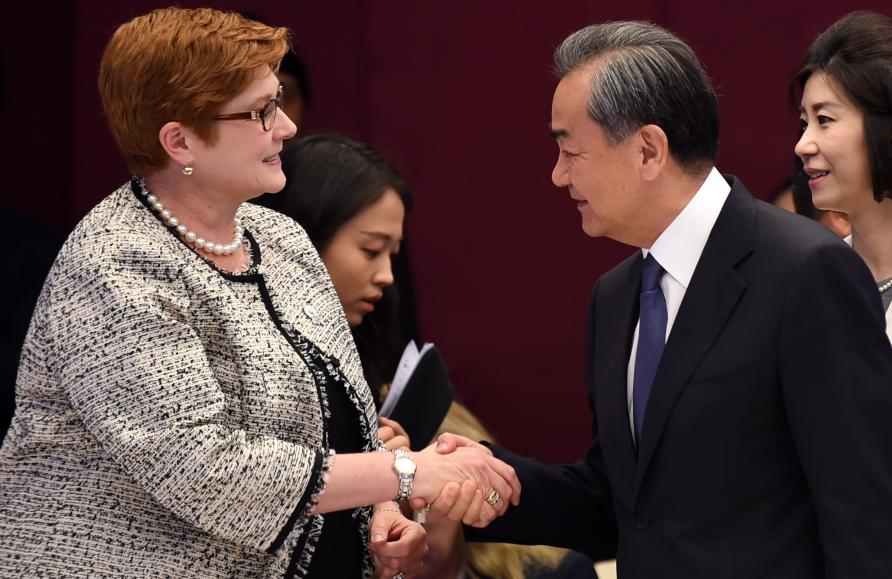
13. **Xi’s Vision for a New Global Order**President Xi Jinping utilized the grand platform of the military parade not merely to display military might but to articulate his expansive vision for a new global order, distinct from the crumbling systems established after World War II. His keynote address was a carefully calibrated statement, serving as both a warning to adversaries and a rallying call to allies, asserting China’s readiness to play a central role on the world stage.
Xi’s speech notably called for unity against “hegemonism and power politics,” a thinly veiled criticism directed at nations across the Pacific. He declared to the massive crowd that the “Chinese nation is a great nation that fears no tyranny and stands firm on its own feet,” signaling China’s intent to resist external pressures and assert its sovereignty forcefully. Atlantic Council fellow Wen-Ti Sung observed that this positioning was calculated, reflecting Xi’s confidence that “the table has turned. It’s China that is back in the driver’s seat now.”
Framing current geopolitical tensions as a fundamental choice, Xi stated, “Today, mankind is faced with the choice of peace or war, dialog or confrontation, win-win or zero-sum,” emphasizing that the Chinese people “firmly stand on the right side of history.” This rhetoric, while seemingly advocating for peace, subtly underscored China’s willingness to confront challenges head-on and use its military power if necessary to safeguard its interests and promote its vision.
Furthermore, Xi’s frequent references to “the rejuvenation of the Chinese nation” in his speech resonated with his strategic objectives, including the long-held ambition for Taiwan’s annexation. He pledged to “safeguard national sovereignty and territorial integrity,” a clear message regarding Taiwan. By consciously wearing a gray Mao-style tunic and drawing parallels between past struggles and present challenges, Xi deliberately connected his leadership to China’s revolutionary heritage, reinforcing a narrative of national renewal after historical humiliations and positioning China as a global leader prepared to rival the West.
Military equipment: Xi Jinping
Name: Xi Jinping
NativeName: nobold
NativeNameLang: zh-Hans-CN
Caption: Xi in 2025
Office: General Secretary of the Chinese Communist Party
TermStart: 15 November 2012
Predecessor: Hu Jintao
Office1: President of China
Premier1: Li Keqiang,Li Qiang
Vicepresident1: undefined
TermStart1: 14 March 2013
Predecessor1: Hu Jintao
Office2: Chairman of the Central Military Commission (China)
Deputy2: Fan Changlong,Xu Qiliang,Zhang Youxia,He Weidong
TermStart2: Party Commission: 15 November 2012,State Commission: 14 March 2013
Predecessor2: Hu Jintao
Office3: Vice Chairman of the Central Military Commission
1blankname3: Chairman
1namedata3: Hu Jintao
Alongside3: Guo Boxiong
Term3: Party Commission:
18 October 2010 – 15 November 2012,State Commission:
28 October 2010 – 14 March 2013
Office4: Vice President of China
President4: Hu Jintao
TermStart4: 15 March 2008
TermEnd4: 14 March 2013
Predecessor4: Zeng Qinghong
Successor4: Li Yuanchao
BirthDate: [object Object]
BirthPlace: Beijing, China
Party: Chinese Communist Party
Spouse: [object Object]
Children: Xi Mingze
Residence: Zhongnanhai
Education: B. S.,LL.D.
Parents: Xi Zhongxun,Qi Xin
Relatives: Qi Qiaoqiao
Signature: Xi Jinping signature (2023).svg
Footnotes: Collapsible list
Titlestyle: background-color:#FCF; text-align:center;
Title: Other offices held
Bullets: on
Module: Infobox scientist
Embed: true
ThesisTitle: A Tentative Study on China’s Rural Marketization
ThesisUrl: https://archive.org/details/20220730_20220730_1031
ThesisYear: 2001
DoctoralAdvisor: lang
Module2: Listen
Module3: Infobox Chinese
Child: true
Pic: Xi Jinping (Chinese characters).svg
Piccap: “Xi Jinping” in simplified (top) and traditional (bottom) Chinese characters
Picupright: 0.5
S: 习近平
T: 習近平
P: Xí Jìnpíng
Bpmf: ㄒㄧˊ ㄐㄧㄣˋ ㄆㄧㄥˊ
W: tonesup
Wyr: Syí Jìnpíng
Mps: Shí Jìn-píng
Mi: IPAc-cmn
H: Sip^6 Kiun^4 Pin^2
Phfs: Si̍p Khiun-phìn
Y: Jaahp Gahn-pìhng
Ci: IPAc-yue
J: Zaap6 Gan6-ping4
Poj: Si̍p Kīn-pêng
Tl: Si̍p Kīn-pîng
Bp: Síp Gîn-bíng
Buc: Sĭk Gê̤ṳng-ping
Lmz: Zih8 Jin6-bin6
Order: st
Awards: List of awards and honours received by Xi Jinping
Alt: Xi in 2024, wearing black suit, smiling
Nationality: Chinese
Categories: 1953 births, 20th-century Chinese philosophers, 20th-century Chinese politicians, 20th-century atheists, 21st-century Chinese male writers
Summary: Xi Jinping (born 15 June 1953) is a Chinese politician who has been the general secretary of the Chinese Communist Party (CCP) and chairman of the Central Military Commission (CMC), and thus the paramount leader of China, since 2012. Since 2013, Xi has also served as the seventh president of China. As a member of the fifth generation of Chinese leadership, Xi is the first CCP general secretary born after the establishment of the People’s Republic of China (PRC).
The son of Chinese communist veteran Xi Zhongxun, Xi was exiled to rural Yanchuan County, Shaanxi Province, as a teenager following his father’s purge during the Cultural Revolution. He lived in a yaodong in the village of Liangjiahe, where he joined the CCP after several failed attempts and worked as the local party secretary. After studying chemical engineering at Tsinghua University as a worker-peasant-soldier student, Xi rose through the ranks politically in China’s coastal provinces. Xi was governor of Fujian from 1999 to 2002, before becoming governor and party secretary of neighboring Zhejiang from 2002 to 2007. Following the dismissal of the party secretary of Shanghai, Chen Liangyu, Xi was transferred to replace him for a brief period in 2007. He subsequently joined the Politburo Standing Committee (PSC) of the CCP the same year and was the first-ranking secretary of the Central Secretariat in October 2007. In 2008, he was designated as Hu Jintao’s presumed successor as paramount leader. Towards this end, Xi was appointed the eighth vice president and vice chairman of the CMC. He officially received the title of leadership core from the CCP in 2016.
While overseeing China’s domestic policy, Xi has introduced far-ranging measures to enforce party discipline and strengthen internal unity. His anti-corruption campaign led to the downfall of prominent incumbent and retired CCP officials, including former PSC member Zhou Yongkang. For the sake of promoting “common prosperity”, Xi has enacted a series of policies designed to increase equality, overseen targeted poverty alleviation programs, and directed a broad crackdown in 2021 against the tech and tutoring sectors. Furthermore, he has expanded support for state-owned enterprises (SOEs), emphasized advanced manufacturing and tech development, advanced military-civil fusion, and attempted to reform China’s property sector. Following the onset of the COVID-19 pandemic in mainland China, he initially presided over a zero-COVID policy from January 2020 to December 2022 before ultimately shifting towards a mitigation strategy after COVID-19 protests occurred in China.
Xi has pursued a more aggressive foreign policy particularly with regards to China’s relations with the United States, the nine-dash line in the South China Sea, and the Sino-Indian border dispute. Additionally, for the sake of advancing Chinese economic interests abroad, Xi has sought to expand China’s influence in Africa and Eurasia by championing the Belt and Road Initiative. Xi presided over a deterioration in relations between Beijing and Taipei under Taiwanese president Tsai Ing-wen, successor of Ma Ying-jeou whom Xi met in 2015. In 2020, Xi oversaw the passage of a national security law in Hong Kong, which clamped down on political opposition in the city, especially pro-democracy activists.
Since coming to power, Xi’s tenure has witnessed a significant increase in censorship and mass surveillance, a deterioration in human rights (including the persecution of Uyghurs), the rise of a cult of personality, and the removal of term limits for the presidency in 2018. Xi’s political ideas and principles, known as Xi Jinping Thought, have been incorporated into the party and national constitutions. As the central figure of the fifth generation of leadership of the PRC, Xi has centralized institutional power by taking on multiple positions, including new CCP committees on national security, economic and social reforms, military restructuring and modernization, and the internet. In October 2022, Xi secured a third term as CCP General Secretary, and was re-elected state president for an unprecedented third term in March 2023.
Get more information about: Xi Jinping
Read more about: China’s Parade of Power: A New Chapter in the World’s Greatest Military Rivalry, Signifying a Shifting Global Order
14. **Critical Lessons Learned from Modern Conflicts Regarding Operational Readiness**While the Beijing parade offered a formidable visual spectacle of advanced weaponry, analysts cautiously noted that the true measure of military effectiveness lies beyond impressive displays. Critical lessons drawn from modern conflicts, particularly the ongoing Russia-Ukraine war, have profoundly influenced China’s defense priorities and its approach to operational readiness, highlighting aspects that were not overtly visible during the parade.
Ankit Panda pointed out that China, famously, has not engaged in a high-intensity conflict since the Sino-Vietnamese war in 1979, making its ability to prevail in such scenarios a subject of analytical scrutiny. He emphasized that, as observed from Russia’s experience in Ukraine, “you can’t just count the beans” to gauge military capability, implying that combat experience and coordination are paramount.
This perspective contrasts with the demonstrable operational readiness of forces like the U.S. military, which consistently showcases its ability to deliver firepower on target without drawing counterfire. Such real-world combat testing and operational proficiency are areas where the People’s Liberation Army (PLA) has yet to prove itself, leading to a degree of wariness among analysts despite the impressive show of technology.
Indeed, Retired Australian Army Maj. Gen. Mick Ryan, while acknowledging China’s technological sophistication and indigenous production capabilities, stressed that “none of the weapons on display have been tested in combat.” He concluded that while China is rapidly closing the gap, the U.S. likely remains the strongest military globally, though by a reduced margin. This sentiment underscores that “impressive on the surface, parades are not a good indicator of military effectiveness,” and that practical lessons from conflicts like the Russia-Ukraine war regarding counter-drone systems, airborne early warning aircraft, and the integration of AI-powered drone swarms are continually shaping China’s evolving doctrine and pursuit of operational readiness.
The parade, therefore, not only presented China’s formidable military progress but also subtly revealed the underlying strategic thinking that incorporates lessons from contemporary battlefields. The emphasis on technologies like advanced anti-drone systems and the drive towards an ‘intelligent warfare’ framework are direct reflections of these learned lessons, aiming to ensure that the PLA’s advanced hardware translates into effective, coordinated, and combat-ready forces for any future contingencies.
Military equipment: Gaza war
1: #invoke:Cite
2: #invoke:Cite
3: #invoke:cite
4: United States support for Israel in the Gaza war
5: #invoke:Cite
6: #invoke:Cite
7: #invoke:Cite
8: #invoke:cite
9: #invoke:cite
10: #invoke:cite
11: #invoke:Cite
Group: Casualties of the Gaza war,#tag:ref
Categories: 2020s conflicts, 2020s in Israel, 2020s in Palestine, 2023 in military history, All Wikipedia articles in need of updating
Summary: The Gaza war is an armed conflict in the Gaza Strip and Israel, fought since 7 October 2023, as part of the unresolved Israeli–Palestinian and Gaza–Israel conflicts dating back to the 20th century. On 7 October 2023, Hamas and other Palestinian militant groups launched a surprise attack on Israel, in which 1,195 Israelis and foreign nationals, including 815 civilians, were killed, and 251 taken hostage with the stated goal of forcing Israel to release Palestinian prisoners. Since the start of the Israeli offensive that followed, over 63,000 Palestinians in Gaza have been killed, almost half of them women and children, and more than 160,000 injured. A study in The Lancet estimated 64,260 deaths in Gaza from traumatic injuries by June 2024, while noting a potentially larger death toll when “indirect” deaths are included. As of May 2025, a comparable figure for traumatic injury deaths would be 93,000.
The Gaza war follows the wars of 2008–2009, 2012, 2014, and the 2021 clashes. After clearing militants from its territory, Israel launched a bombing campaign and invaded Gaza on 27 October with the stated objectives of destroying Hamas and freeing the hostages. Israeli forces launched numerous campaigns, including the Rafah offensive from May 2024, three battles fought around Khan Yunis, and the siege of North Gaza from October 2024, and have assassinated Hamas leaders inside and outside of Gaza. A temporary ceasefire in November 2023 broke down, and a second ceasefire in January 2025 ended with a surprise attack by Israel in March 2025. In August 2025, Israel began an offensive to take over Gaza City in the north.
The war has resulted in a humanitarian crisis in Gaza. Israel’s tightened blockade cut off basic necessities, causing a severe hunger crisis, malnutrition, and imminent to confirmed famine as of August 2025. By early 2025, Israel had caused unprecedented destruction in Gaza and made large parts of it uninhabitable, leveling entire cities and destroying hospitals (including children’s hospitals), religious and cultural landmarks, educational facilities, agricultural land, and cemeteries. Gazan journalists, health workers, aid workers and other members of civil society have been detained, tortured and killed. Nearly all of the strip’s 2.3 million Palestinian population have been forcibly displaced. Over 100,000 Israelis were internally displaced at the height of the conflict. The first day was the deadliest in Israel’s history, and the war is the deadliest for Palestinians in the broader conflict.
Many human rights organizations and scholars of genocide studies and international law say that Israel is committing genocide in Gaza, though some dispute this. Experts and human rights organizations have also stated that Israel and Hamas have committed war crimes. A case accusing Israel of committing genocide in Gaza is being reviewed by the International Court of Justice, while the International Criminal Court issued arrest warrants for Benjamin Netanyahu, Yoav Gallant and Mohammed Deif, though Deif’s was withdrawn because he was killed. Torture and sexual violence have been committed by Palestinian militant groups and by Israeli forces.
Israel has received extensive military and diplomatic support from the United States, which has vetoed multiple pro-ceasefire resolutions from the UN Security Council. The war has reverberated regionally, with Axis of Resistance groups across several Arab countries and Iran clashing with the United States and Israel, including the 12-day Iran–Israel war. A year of strikes between Israel and Hezbollah led to the Israeli invasion of Lebanon, the ongoing Israeli operations in Syria, as well as contributing to the fall of the Assad regime. The war continues to have significant regional and international repercussions, with large protests worldwide calling for a ceasefire, as well as a surge of antisemitism and anti-Palestinian racism.
Get more information about: Gaza war
Read more about: Naval Warfare Enters a New Era: Swarms, Missiles, and the Challenge to Carrier Dominance
As the world watches China’s ascent, the parade served as a powerful declaration, but the true measure of its implications will unfold in the subtle shifts of global power dynamics, economic realignments, and the ultimate test of operational readiness should Xi’s vision encounter direct challenge. The meticulously planned event achieved several key goals, showcasing China’s remarkable military progress, its strategic alliances, and Xi’s calculated diplomatic message. However, the questions surrounding combat readiness and the actual implications for global peace versus conflict remain open, ensuring continued scrutiny from international observers.”


